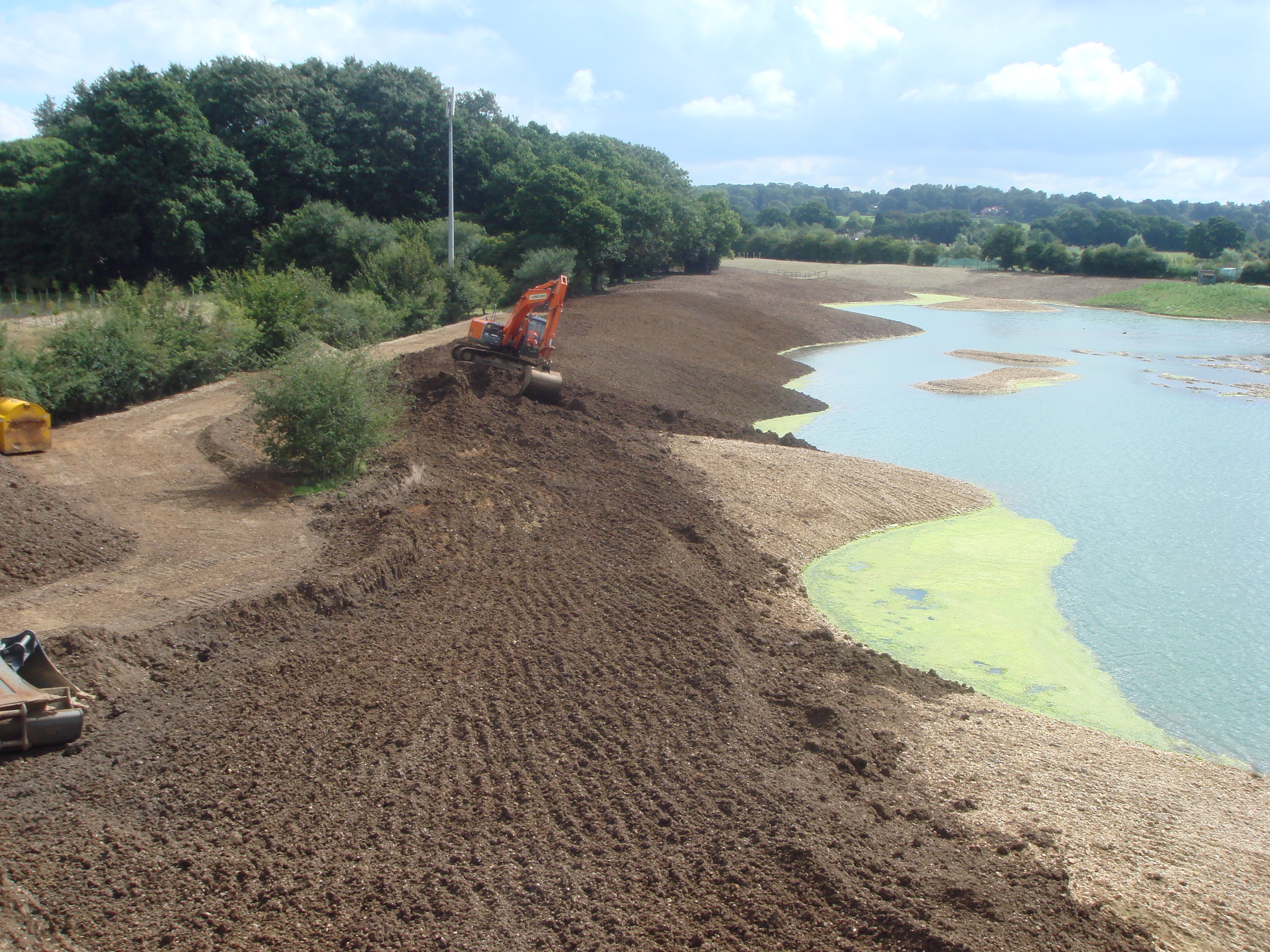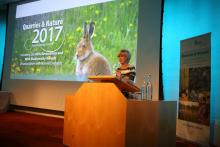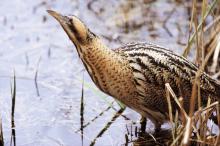
British government Minister Lord de Mauley praised members of the
The event, which had the theme Realising the Potential, Progress and Partnership, celebrated and shared excellence in restoration and biodiversity enhancement and highlighted the value of working in partnership. Almost 200 delegates attended, which comprised over 50 environmental and other stakeholder organisations, along with those from industry, government departments, academia and local authorities.
Department for Environment, Food and Rural Affairs (DEFRA) Minister, Lord de Mauley, said: “These awards demonstrate the close relationship MPA and its members have built with wildlife organisations to enhance and protect biodiversity and will deliver a lasting legacy for wildlife.”
Several speakers from nature conservation groups addressed delegates, highlighting how they are working in partnership with the mineral products industry. These included Stephanie Hilborne OBE, chief executive of
Stephanie Hilborne said: “The Wildlife Trusts recognise that MPA members take their responsibility for nature very seriously and have an impressive track record of investing in wildlife habitats. Few sectors have so many staff who are so genuinely committed to the natural environment. And few companies can rival the strength of some of the partnerships we have built between minerals and wildlife charities.
“We need your continued support and commitment and as other businesses learn the ropes, we need the minerals sector to be pushing the boundaries further and building even more profound partnerships with organisations like The Wildlife Trusts.”
Paul Lambert said: “The MPA’s commitment to restoring biodiversity and engaging with local communities is a shining example of what industry can do for people and for wildlife.
“The MPA and its members are uniquely placed to deliver for nature through their management and restoration of sites. The Association is also uniquely placed to share their innovation and commitment with industry more widely. We look forward to continuing our partnership with the MPA to help business to recognise the value of the natural environment.”
RSPB (
Moreover, an area of priority habitats the equivalent of at least five Richmond Parks (over 10,000 hectares) has been created on minerals sites, with this set to double as currently worked sites are restored.
Nigel Jackson, chief executive MPA, said: “Once again our members have demonstrated how much good work they are doing to achieve high quality restoration and to protect and enhance biodiversity throughout the country. The innovations and partnerships are delivering progress, priority habitats and assets locally and for the UK. The industry is uniquely placed to benefit nature, its legacy is growing, its potential is being realised and now we hope that this is being recognised.”
MPA Restoration Awards
MPA’s longstanding Restoration Awards have been recognising exceptional practice for over 40 years and the 2013 winner of the Cooper-Heyman Cup is
Lafarge Tarmac’s Threshfield Quarry, in the Yorkshire Dales National Park, is also highly commended. Here, the company has planted new trees, created three large ponds, rebuilt dry stone walls and created footpaths - much of the rest of the regeneration will happen naturally over time. Old lime kilns and other buildings are being retained in an area of the quarry that is being leased to a community group for arts, heritage and business uses. The vision is of a place that becomes a tourist venue within the national park.
MPA Biodiversity Awards
For the first time this year, MPA’s Biodiversity Awards had three categories: Landscape Scale Restoration, in association with Natural England; Innovation; and Individual Contribution.
The winner of the Landscape Scale Restoration category is the Upper Nene Valley Gravel Pits in Northamptonshire entered by Hanson UK. With considerable help from Hanson UK’s network of operational and restored quarries in the area, it has been possible to create one of Europe’s newest Special Protection Areas for vulnerable bird species in this beautiful valley. A 25.6km long string of carefully managed wetlands has been created.
The runner-up of the Landscape Scale Restoration category is Bayston Hill Quarry, Shropshire, entered by Lafarge Tarmac and Shropshire County Council. Lafarge Tarmac has created a large new screening bank which also manages to incorporate 20 hectares of priority habitat on what was previously farmland. After only a short time in existence, the bank is making a major contribution to Shropshire’s biodiversity targets.
The winner of the Innovation category is Ardley North Quarry in Oxfordshire entered by Smith & Sons (Bletchington) with its landscape consultants, Environmental Solutions through Partnership (ESP). They used
The runner-up in the Innovation category is Hanson UK’s Whiteball Quarry in Somerset. One of Whiteball Quarry’s ponds was developed as an “Ark site for crayfish”, a habitat for white-clawed crayfish, away from the threat of signal crayfish. Invertebrate and amphibian surveys of the area revealed five species of amphibians, including great crested newts. Buglife submitted a paper to Natural England explaining that the introduction of white-clawed crayfish to the pond would not have a significant effect on the GCNs, and the crayfish translocation license was granted. 60 tonnes of rock were placed providing holes for crayfish refuge and breeding before they were released into the pond.
The winner of the Butterfield Trophy for Individual Contribution to Biodiversity Award is Phil Harding, farms and restoration manager at
The MPA Restoration and Biodiversity Awards was expertly hosted by journalist Sybil Ruscoe, most recently associated with the BBC Radio 4 Farming Today programme, and the live presentations were complemented by on-screen video footage of the winning sites. The sponsors’ exhibition provided an excellent arena for networking before and after the event.











